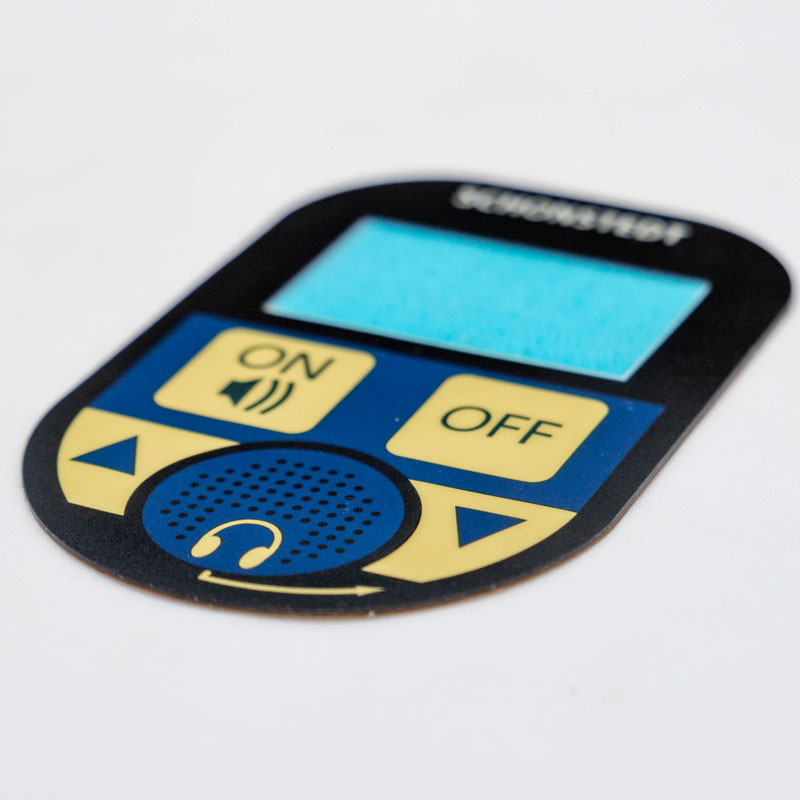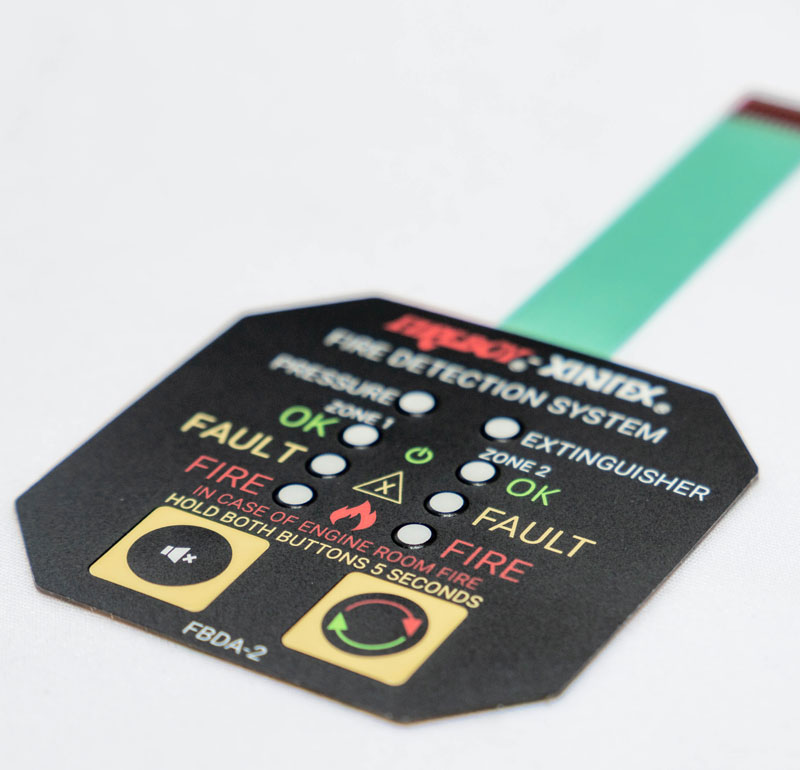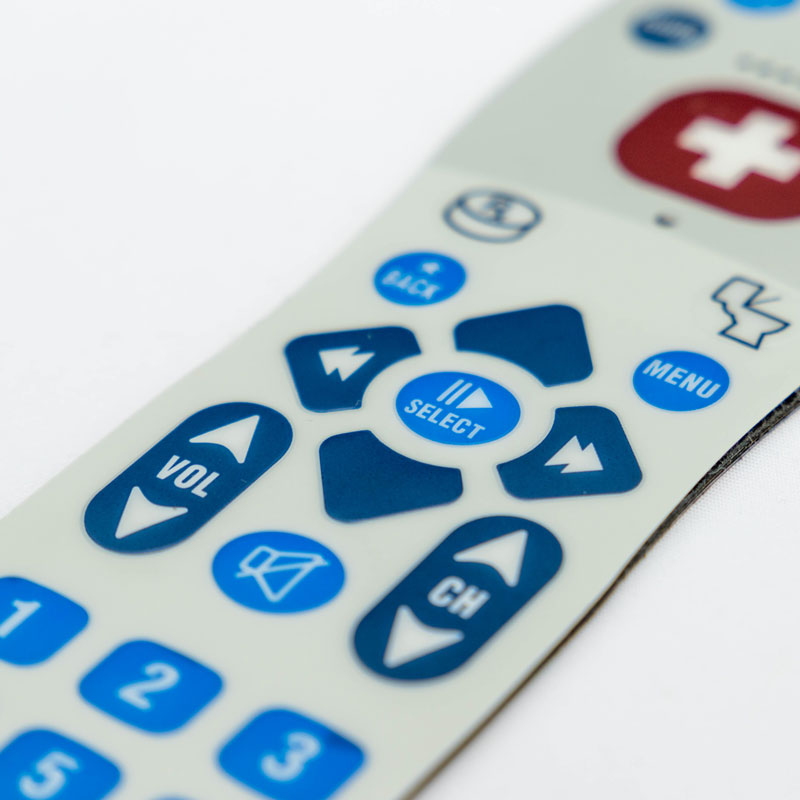When it comes to creating membrane switches, printing is an essential step. However, there are different printing methods available, and each comes with its advantages and disadvantages. In this article, we'll explore the advantages and disadvantages of screen printing, digital printing, flexographic printing, and offset printing in membrane switches.
Membrane switches are a popular interface solution for various electronic devices. They consist of multiple layers of polyester films and adhesives, and printing is an essential step in their production. There are different printing methods available, and each has its advantages and disadvantages. Choosing the right printing method is crucial in achieving high-quality and durable membrane switches.

Screen printing is a traditional printing method that involves the use of a mesh stencil to transfer ink onto a substrate. It is a versatile printing method that can print on various substrates, including plastic, metal, and glass. In membrane switch production, screen printing is the most popular method because it can print conductive inks and adhesives on various films.
Advantages of Screen Printing
Can print on various substrates, including curved and uneven surfaces
Can print conductive inks and adhesives, making it suitable for membrane switches
Produces vibrant and long-lasting colors
Can achieve a high level of detail and accuracy
Disadvantages of Screen Printing
Expensive for small runs and complex designs
Requires separate stencils for each color, increasing setup time and cost
Limited color gamut compared to digital printing
Digital printing is a modern printing method that involves the use of digital files to transfer ink onto a substrate. It is a relatively new technology that has revolutionized the printing industry, offering fast and cost-effective printing solutions. In custom membrane switch production, digital printing is suitable for small runs and complex designs.
Advantages of Digital Printing
Cost-effective for small runs and complex designs
No setup costs, making it ideal for prototyping
Can print multiple colors in a single pass, reducing setup time
Can achieve a wide color gamut
Disadvantages of Digital Printing
Limited substrate compatibility, mainly suited for paper and plastic
Less durable than screen printing, as the ink sits on top of the substrate rather than bonding with it
Limited accuracy and detail compared to screen printing

Flexographic printing is a printing method that involves the use of a flexible printing plate to transfer ink onto a substrate. It is a popular printing method for packaging and labeling applications. In membrane switch production, flexographic printing can print on various films and produce high-quality graphics.
Advantages of Flexographic Printing
Suitable for printing on various films
High-speed printing, making it suitable for high-volume runs
Produces high-quality graphics with accurate registration
Can print using a wide range of inks, including UV-curable inks for added durability
Disadvantages of Flexographic Printing
Limited color gamut compared to digital printing
Less accurate than screen printing, with occasional ink smudging
Unsuitable for printing on uneven surfaces
Offset printing is a printing method that involves the use of printing plates to transfer ink onto a rubber blanket, which then transfers the ink onto the substrate. It is a popular printing method for high-volume runs and is commonly used in the commercial printing industry. In membrane switch production, offset printing can produce high-quality graphics on various films.
Advantages of Offset Printing
High-quality and accurate printing
Suitable for high-volume runs
Can print on various substrates, including paper, plastic, and metal
Produces vibrant and long-lasting colors
Disadvantages of Offset Printing
Expensive for small runs and complex designs
Requires separate plates for each color, increasing setup time and cost
Unsuitable for printing on uneven surfaces
Comparison of the Four Printing Methods
To better understand the advantages and disadvantages of each printing method, let's compare them side by side:
Printing Method | Substrate Compatibility | Color Gamut | Setup Time | Accuracy | Durability |
Screen Printing | Various, including curved and uneven surfaces | Limited | High | High | High |
Digital Printing | Limited, mainly suited for paper and plastic | Wide | Low | Limited | Low |
Flexographic Printing | Suitable for various films | Limited | Medium | Medium | Medium |
Offset Printing | Various, including paper, plastic, and metal | Wide | High | High | High |
As previously mentioned, screen printing is the most popular printing method for membrane switches. Here are its advantages and disadvantages:
Advantages of Screen Printing
Can print on various substrates, including curved and uneven surfaces
Can print conductive inks and adhesives, making it suitable for membrane switches
Produces vibrant and long-lasting colors
Can achieve a high level of detail and accuracy
Disadvantages of Screen Printing
Expensive for small runs and complex designs
Requires separate stencils for each color, increasing setup time and cost
Limited color gamut compared to digital printing
Digital printing is a cost-effective solution for small runs and complex designs. Here are its advantages and disadvantages:
Advantages of Digital Printing
Cost-effective for small runs and complex designs
No setup costs, making it ideal for prototyping
Can print multiple colors in a single pass, reducing setup time
Can achieve a wide color gamut
Disadvantages of Digital Printing
Limited substrate compatibility, mainly suited for paper and plastic
Less durable than screen printing, as the ink sits on top of the substrate rather than bonding with it

Flexographic printing is a popular printing method for packaging and labeling applications. Here are its advantages and disadvantages:
Advantages of Flexographic Printing
Suitable for printing on various films
High-speed printing, making it suitable for high-volume runs
Produces high-quality graphics with accurate registration
Can print using a wide range of inks, including UV-curable inks for added durability
Disadvantages of Flexographic Printing
Limited color gamut compared to digital printing
Less accurate than screen printing, with occasional ink smudging
Unsuitable for printing on uneven surfaces
Offset printing is commonly used in the commercial printing industry for high-volume runs. Here are its advantages and disadvantages:
Advantages of Offset Printing
High-quality and accurate printing
Suitable for high-volume runs
Can print on various substrates, including paper, plastic, and metal
Produces vibrant and long-lasting colors
Disadvantages of Offset Printing
Expensive for small runs and complex designs
Requires separate plates for each color, increasing setup time and cost
Unsuitable for printing on uneven surfaces
Choosing the right printing method for your membrane switches, for example, custom keypad membrane, depends on several factors, such as the volume of production, complexity of the design, and substrate compatibility. Here are some tips to help you choose the right printing method:
For high-volume runs, offset printing and flexographic printing are suitable options.
For small runs and complex designs, digital printing is a cost-effective solution.
For printing on various substrates and achieving high accuracy, screen printing is the most suitable option.
Consider the color gamut and durability requirements when choosing a printing method.
Printing is an essential step in the production of membrane switches, and choosing the right printing method is crucial in achieving high-quality and durable switches. Screen printing, digital printing, flexographic printing, and offset printing are the four most common printing methods used in membrane switch production. Each method has its advantages and disadvantages, and choosing the right method depends on several factors, such as volume, complexity, and substrate compatibility.
1. Which printing method is the most suitable for membrane switch production?
Screen printing is the most suitable method for membrane switch production, as it can print conductive inks and adhesives on various films.
2. Can digital printing be used for high-volume runs?
Digital printing is not suitable for high-volume runs, as it has limitations in substrate compatibility and durability.
3. Is flexographic printing suitable for printing on uneven surfaces?
Flexographic printing is unsuitable for printing on uneven surfaces.
4. What is the cost ofscreen printing compared to digital printing?
Screen printing is more expensive than digital printing for small runs and complex designs, but it is more cost-effective for high-volume runs.
5. Can offset printing achieve a wide color gamut?
Yes, offset printing can achieve a wide color gamut, making it suitable for high-quality graphics.
